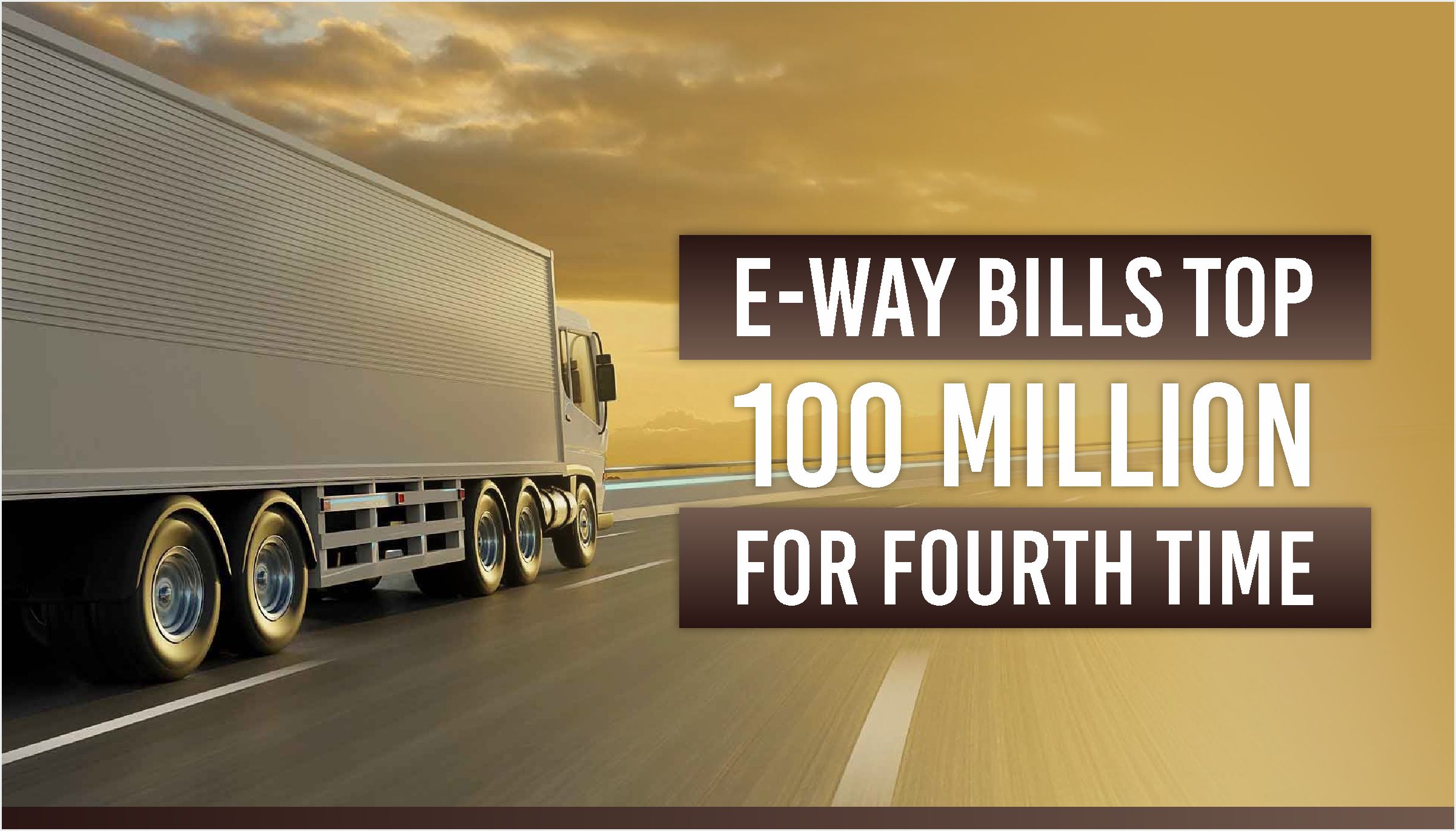E-way Bills Top 100 Million for Fourth Tim

June 2024 saw a moderation in e-way bill generation in India, but the numbers remained robust, exceeding the 100-million mark. This is the fourth time that e-way bill generation has crossed this significant threshold, reflecting strong manufacturing activity and compliance with GST regulations. Higher numbers of e-way bills indicate a thriving economy, as they reflect increased movement of goods and robust manufacturing activity. This uptick suggests strong demand, efficient supply chains, and improved compliance with GST regulations, all contributing to greater economic growth and higher revenue collections for the government.
The country recorded 103.1 million e-way bills in May and a record 103.5 million in March. Last October, the e-way bill generation surged past 100 million, a testament to the growing efficiency and compliance within the Indian logistics and manufacturing sectors. In June 2023, the number stood significantly lower at 86 million, showcasing a notable year-on-year growth.
E-way Bill Generation in June 2024
In June 2024, over 100 million e-way bills, or electronic permits for the shipment of goods within and across states, were raised. This indicates robust manufacturing activity in the last month of the first quarter of 2024-25. The consistent high numbers highlight the effectiveness of the Goods and Services Tax Network (GSTN), the company responsible for processing GST return forms.
Taxes for transactions in June will be collected in July, which is expected to result in high GST collections for the month. GST revenue has remained above ₹1.7 trillion for the last four months, with June 2024 witnessing a collection of ₹1.74 trillion. In comparison, July 2023 saw a collection of ₹1.65 trillion. The sustained high e-way bill generation is a positive indicator for future GST collections.
High-Frequency Indicators
Purchasing Managers’ Index (PMI)
The sustained high e-way bill generation aligns with other high-frequency indicators, suggesting buoyant demand conditions. S&P Global reported that the HSBC India manufacturing purchasing managers’ index (PMI) rose from 57.5 in May to 58.3 in June. A PMI reading above 50 indicates an improvement over the previous month, based on feedback from 400 manufacturing companies.
Indian Railways Freight Activity
Indian Railways reported a 10% yearly improvement in originating freight loading in June, reaching 135.46 million tonnes. The national carrier’s freight revenue also surged by more than 11% annually. This growth in rail freight activity further corroborates the strong demand and manufacturing activity.
Auto Sales
However, the auto sector did not mirror this trend, experiencing sluggish sales due to heatwave conditions and a delay in monsoon. Retail auto sales grew by a modest 0.73% year-on-year to 1.88 million units in June, according to data from the Federation of Automobile Dealers’ Association. June is traditionally one of the weaker months for the country’s auto sector.
Economic Growth Implications
Experts suggest that the growth in e-way bill generation indicates consistent economic activity. While overall economic growth and GST collections depend on various factors like the value of taxable supplies and the growth of services, the sustained increase in e-way bill generation is a positive sign. It reflects the industry’s focus on ensuring compliance with GST regulations and continued economic activity.
The moderation yet sustained high level of e-way bill generation in June 2024 underscores robust manufacturing activity and compliance within the logistics sector. Coupled with other high-frequency indicators, this trend suggests continued economic growth and strong demand conditions, despite some sector-specific challenges like those faced by the auto industry. As the country progresses into the next quarter, these indicators will be crucial in assessing the overall economic health and trajectory.
